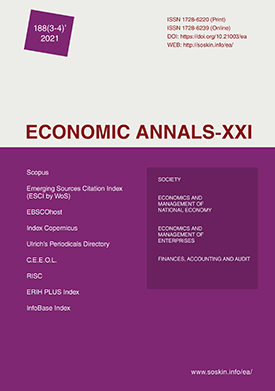The current state of the nationalization of the party systems in the Slovak Republic and Ukraine
The current state of the nationalization of the party systems in the Slovak Republic and Ukraine
Author(s): Mykhailo Shelemba, Marta ShelembaSubject(s): Economic policy, Government/Political systems, Electoral systems
Published by: Institute of Society Transformation
Keywords: Party Competition; Electoral Advantages; Nationalization of Party Systems; Regionalization; Presidentialism; Election System; Entry Barrier; Form of Government; Social and Political Delimitation;
Summary/Abstract: The paper assesses the current state of the nationalization of the party systems in the Slovak Republic and Ukraine based on the results of the latest parliamentary elections. By using formalized methods, the authors of the paper analyzed the composition of the party systems at the empirical level. The results of the conducted research show that the party landscape of the Ukrainian Parliament has changed in the direction of electoral preferences in favour of new participants of the political process. The analysis with the use of the Nagayama triangle showed that the electoral advantage of one political party was provided in most of the regions of Ukraine (the political party «Servant of the People»). Under the M. Jones’ and S. Mainwaring’s technique, a high level of the party system nationalization (0.70) was established while conducting the research. According to the methodology by G. Golosov, a Russian scientist, the nationalization index in 2019 was equal to 0.56. It was proved that the factors of presidentialism, sociopolitical delimitations of the political regime, forms of government, the entry barrier, and regionalization have impacted nationalization of the party system. Six political parties entered the Slovak Parliament. With the opposition center-right conservative political force «Ordinary People and Independent Individuals» being the leader of this election campaign. Parliament’s The assessment of the Slovak Parliament with the use of the Nagayama triangle shows that in most parts of Slovakia, no political force has been formed as a result of the elections, which would dominate the level of voters support and that competition provides a minimum gap between the two political forces. The analysis indicated that the nationalization of the party system of the Slovak Republic is 0.89 (the high value) according to the Jones and Mainwaring method and 0.67 (the above-average value) with regard to the Golosov method, being a higher value compared to a relatively similar indicator for Ukraine. It should be emphasized that the main factors impacting the actual state of the studied indicator were the entry barrier and the political regime in the country. The predominance in the level of nationalization of the party system of Slovakia, if compared with the relevant indicator in Ukraine is due to the fact that all political forces that entered the National Council of the Slovak Republic are stable and participate in electoral cycles.
Journal: Економічний часопис - ХХІ
- Issue Year: 188/2021
- Issue No: 03+04
- Page Range: 47-57
- Page Count: 11
- Language: English

